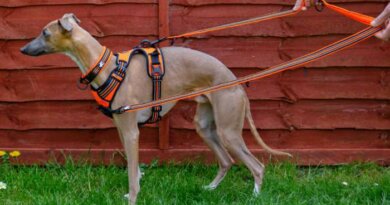Border Collie Has Large Toy Vocabulary
There’s yet another study out about a dog who knows the names of dozens of different toys. Whisky, a Border Collie in Norway, has done more than learn that each individual toy has its own name. She has also shown that she can categorize items into different types of toys—ropes, balls, frisbees and rings—without prior training.
Whisky learned the names of 59 toys prior to the study just by playing with her guardian, a man named Helge O. Svela. He would tell her to go fetch a toy by name and play with her when she brought the right one. He is not a professional trainer, but he loves to spend time with Whisky and taught her a lot in the process.
Her knowledge of toy names was tested by two researchers in animal behavior, Dr. Claudia Fugazza and Dr. Ádám Miklósi, and reported in a study called Depths and limits of spontaneous categorization in a family dog. They found that Whiskey was able to choose the right toy from a group of 16-20 different toys for 54 of the 59 toys. With Svela and Whisky both in the kitchen and an array of toys in the living room, Whisky went to choose a toy when Svela said, “Bring [name of toy]!” The toy that she brought back to the kitchen in her mouth was considered her choice.
Interestingly, Svela named Whisky’s toys in a pattern with each name consisting of an adjective and a noun. The toys were all called things like “small frisbee” or “yellow ring”. Her toys included 10 balls, 7 rings, 4 frisbees and 4 ropes. That allowed researchers to test whether Whisky understood the concept of categories such as “ball” or “rope” in an abstract way. Most studies of animals’ abilities to understand such categories involve training the animals specifically to accomplish this task, but with Whisky, the question was whether or not she had spontaneously developed an understanding of categorization.
GET THE BARK IN YOUR INBOX!
Sign up for our newsletter and stay in the know.
To study Whisky’s understanding of categories of toys, she was asked to fetch a toy of a specific category (such as frisbee) from a group of 4 toys that were new to her. Each group of 4 toys contained a ball, a rope, a frisbee and a ring. She was tested in two different ways. In one series of tests, she explored the toys on her own but was not given the opportunity to play with them. In another series of tests, she and her guardian played with the toys before she was asked to identify them by category.
Whisky was better at identifying toys by their category when she was allowed to play with them prior to the test. In those tests, she correctly identified the toy 55 percent of the time (24 of 44), which is far better than chance when selecting from a group of 4 toys. In the trials in which she was not allowed to play with the toys ahead of time but could only explore them, she chose the correct toy 39 percent of the time (17 of 44), which is still better than chance. If she were just choosing randomly, we would expect her to be right only 25 percent of the time (11 out of 44). It is noteworthy that Whisky performed better if she was allowed to play with toys first. That may indicate that she understands categories better based on functionality (balls are for chasing, ropes are for tugging) than appearance (balls are spherical, ropes are tube-shaped).
Out of Whisky’s 59 toys, 15 had a color as part of the name. In a test designed to test her understanding of the concept of colors such as “blue” and “yellow”, she chose the correctly colored toy only 3 times out of 13 when told to “Bring [name of color]!” Though more trials were planned, the researchers stopped after 13 trials because Whisky showed signs of stress such as barking, whining and panting. So, although Whisky was able to categorize toys by type, she was not able to do so by color.
A clear message from all the studies of dogs with large working vocabularies is that if we spend massive amounts of time interacting with our dogs in playful and enriching ways, they can learn so much. Dogs who love to play and who love to interact with their guardians can accomplish amazing feats, especially when the correct choice is reinforced with play. That happens when they have the opportunity to practice for many hours over weeks, months and years.
If your dog has learned the names of multiple toys, are you interested in expanding her vocabulary?




